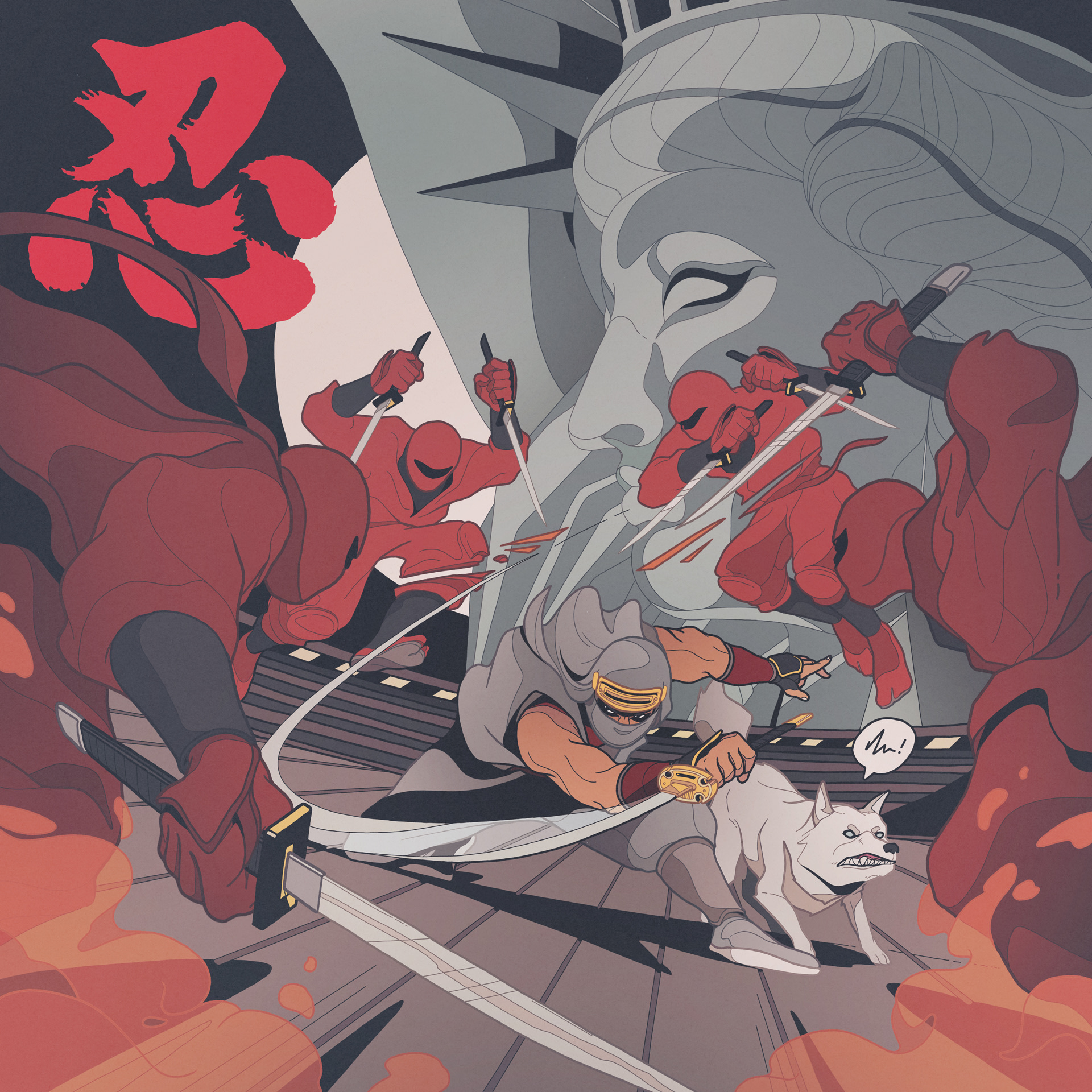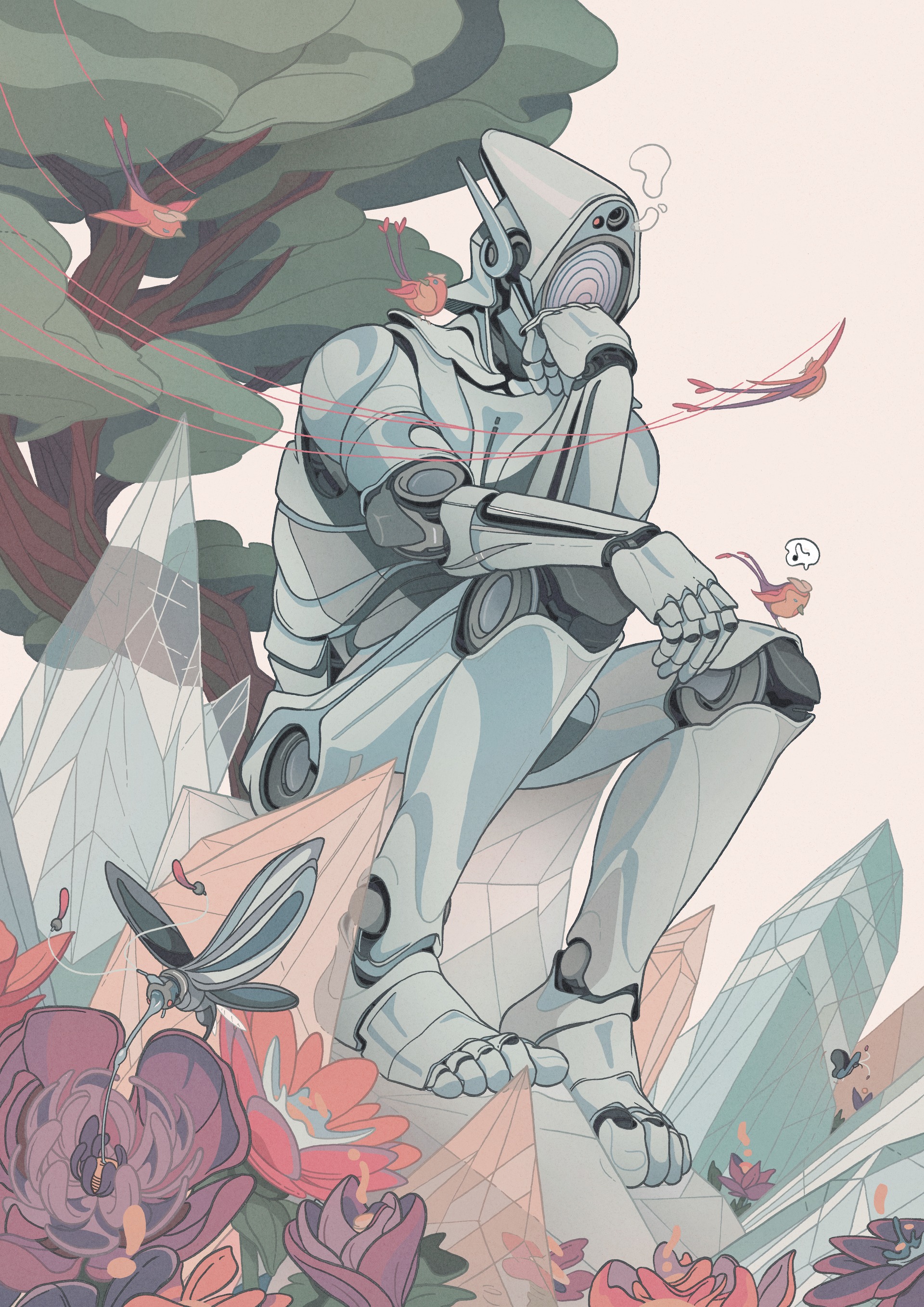In art, East is East, West is West, and Daniel Isles is Daniel Isles. Born and bred in Birmingham, UK, he lives in Hokkaido, Japan, where he has been residing for many years now, carefully carving away at a career as an illustrator and graphic novel/comic artist. Working under the moniker "Dirtyrobot," he is known for his expressive and dynamic cartoon style, fusing elements of Western line art with manga-inspired dynamism. His character art is seen as futuristic, borrowing heavily from street fashion, but also from video game art.
After working with Daniel on his great Jet Set Radio-inspired piece in 2018 (a collaboration also involving SEGA), we teamed up with him again for a fresh take on another legendary gaming classic: Shinobi. As is evident from the resulting new "Shadow Dancer" artwork (available as art print through this website), dynamism is still at the heart of Isles' work. We caught up with the artist to gain more insights into his art style and his love for the Shinobi games.
After working with Daniel on his great Jet Set Radio-inspired piece in 2018 (a collaboration also involving SEGA), we teamed up with him again for a fresh take on another legendary gaming classic: Shinobi. As is evident from the resulting new "Shadow Dancer" artwork (available as art print through this website), dynamism is still at the heart of Isles' work. We caught up with the artist to gain more insights into his art style and his love for the Shinobi games.



